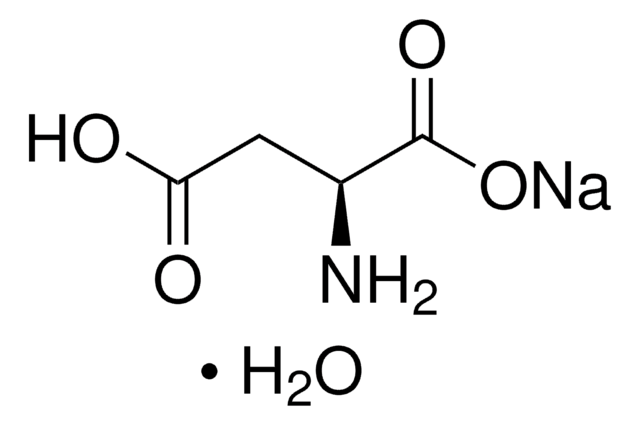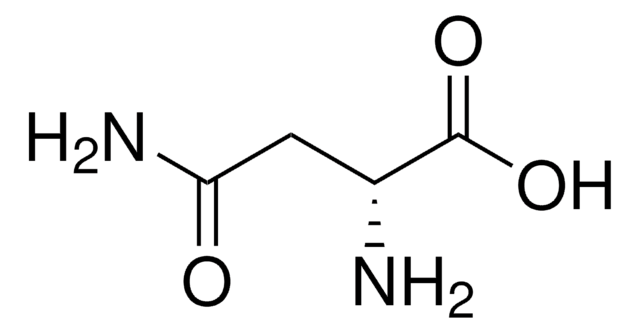A8381
L-asparagina
≥99% (TLC)
Sinonimo/i:
4-ammide dell’acido (S)-2-aminosuccinico, 4-ammide dell’acido L-aspartatico, Acido (S)-(+)-2-aminosuccinamico
About This Item
Prodotti consigliati
product name
L-asparagina, ≥99% (TLC)
Origine biologica
synthetic
Livello qualitativo
Saggio
≥99% (TLC)
Forma fisica
powder
Colore
white to off-white
Punto di fusione
233-235 °C (lit.)
applicazioni
cell analysis
peptide synthesis
Stringa SMILE
[H]O[H].N[C@@H](CC(N)=O)C(O)=O
InChI
1S/C4H8N2O3.H2O/c5-2(4(8)9)1-3(6)7;/h2H,1,5H2,(H2,6,7)(H,8,9);1H2/t2-;/m0./s1
RBMGJIZCEWRQES-DKWTVANSSA-N
Cerchi prodotti simili? Visita Guida al confronto tra prodotti
Descrizione generale
Applicazioni
- as a component of Sauton′s and chelated Sauton′s media for mycobacterial growth
- to test its effect in the induction of Ca2+ flux in rice roots using aequorin luminescence imaging
- as a component of fermentation medium for the Blakeslea trispora spores
Azioni biochim/fisiol
Codice della classe di stoccaggio
11 - Combustible Solids
Classe di pericolosità dell'acqua (WGK)
WGK 1
Punto d’infiammabilità (°F)
Not applicable
Punto d’infiammabilità (°C)
Not applicable
Dispositivi di protezione individuale
Eyeshields, Gloves, type N95 (US)
Certificati d'analisi (COA)
Cerca il Certificati d'analisi (COA) digitando il numero di lotto/batch corrispondente. I numeri di lotto o di batch sono stampati sull'etichetta dei prodotti dopo la parola ‘Lotto’ o ‘Batch’.
Possiedi già questo prodotto?
I documenti relativi ai prodotti acquistati recentemente sono disponibili nell’Archivio dei documenti.
I clienti hanno visto anche
Il team dei nostri ricercatori vanta grande esperienza in tutte le aree della ricerca quali Life Science, scienza dei materiali, sintesi chimica, cromatografia, discipline analitiche, ecc..
Contatta l'Assistenza Tecnica.









